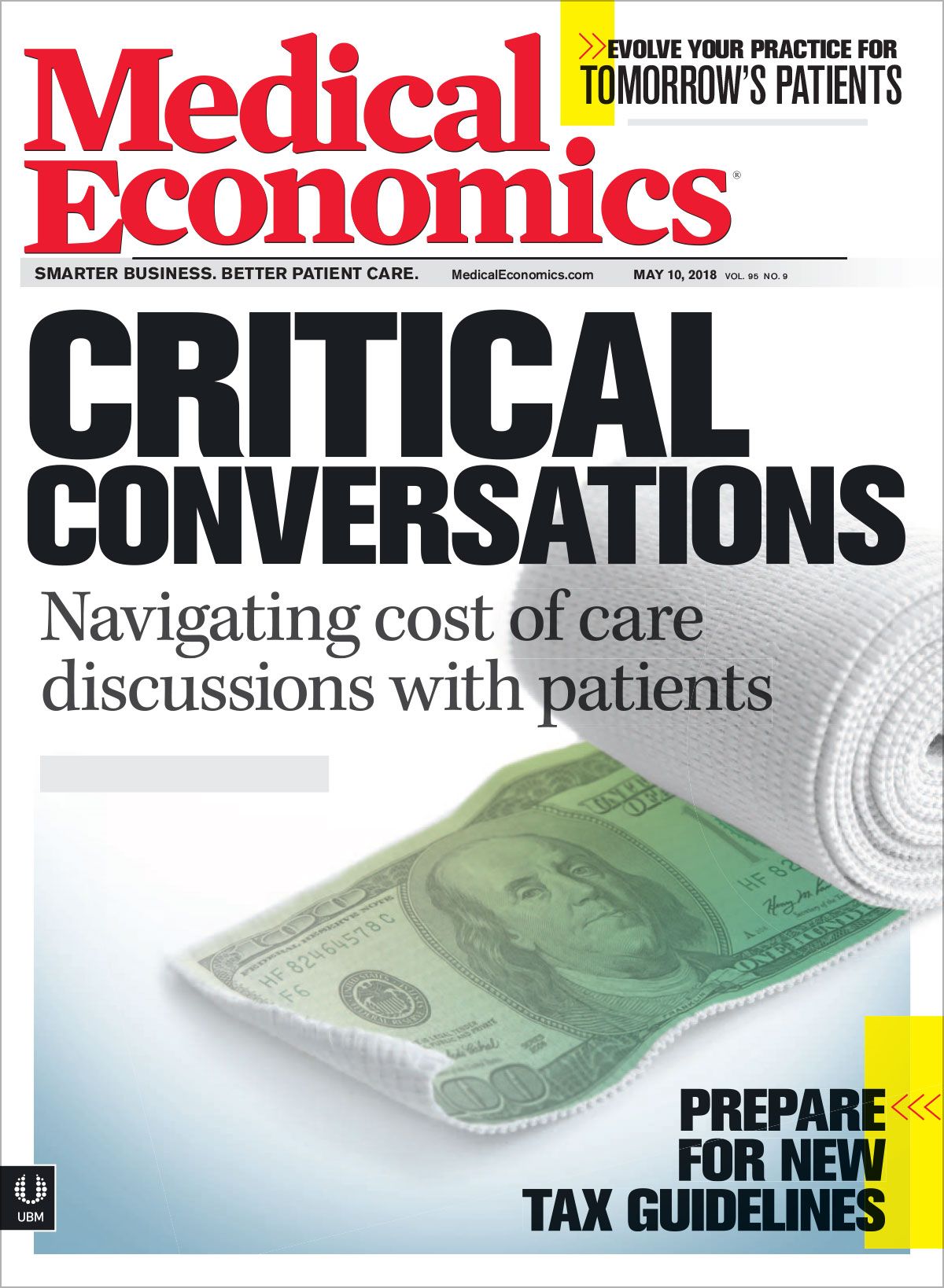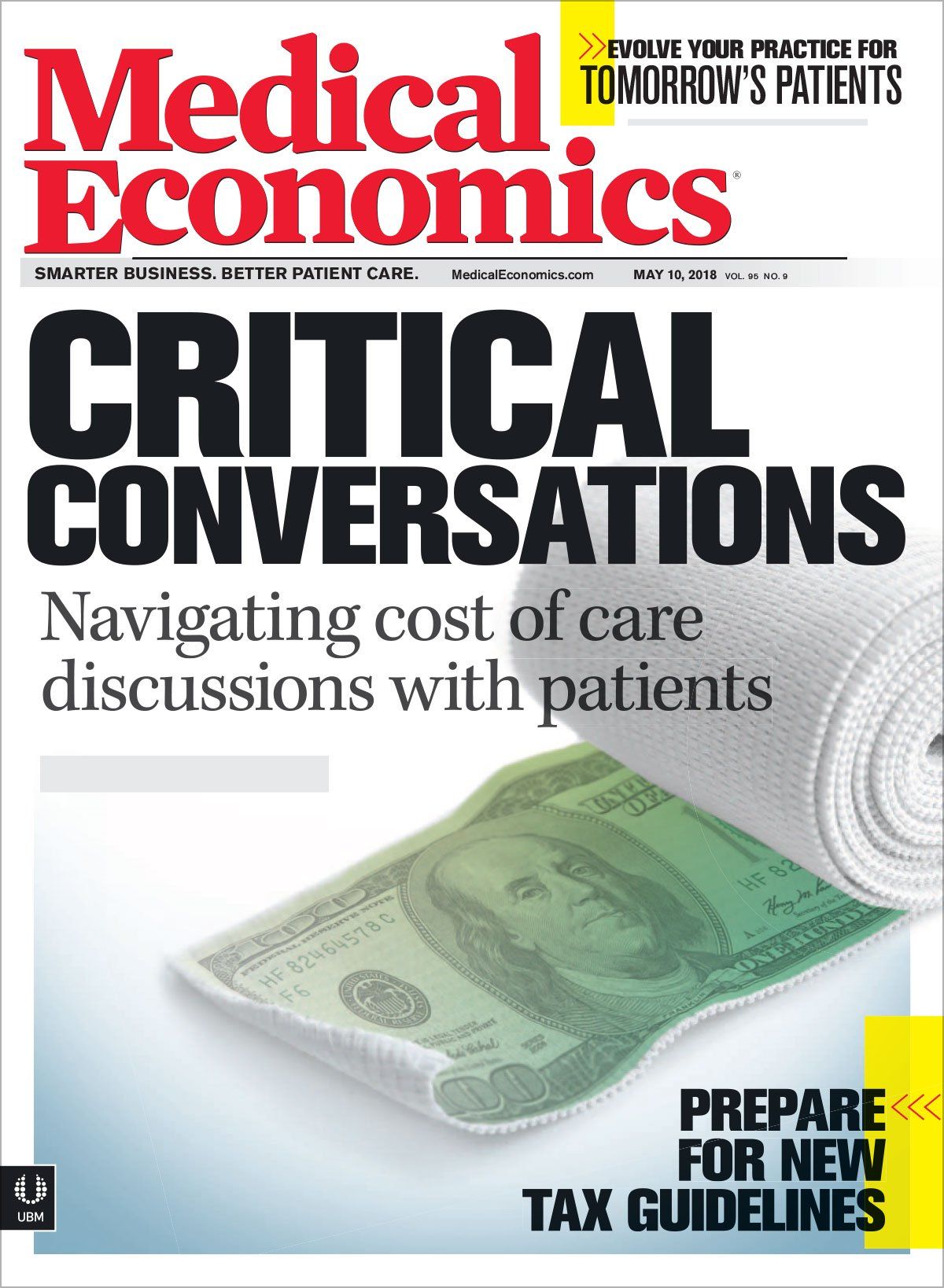- Revenue Cycle Management
- COVID-19
- Reimbursement
- Diabetes Awareness Month
- Risk Management
- Patient Retention
- Staffing
- Medical Economics® 100th Anniversary
- Coding and documentation
- Business of Endocrinology
- Telehealth
- Physicians Financial News
- Cybersecurity
- Cardiovascular Clinical Consult
- Locum Tenens, brought to you by LocumLife®
- Weight Management
- Business of Women's Health
- Practice Efficiency
- Finance and Wealth
- EHRs
- Remote Patient Monitoring
- Sponsored Webinars
- Medical Technology
- Billing and collections
- Acute Pain Management
- Exclusive Content
- Value-based Care
- Business of Pediatrics
- Concierge Medicine 2.0 by Castle Connolly Private Health Partners
- Practice Growth
- Concierge Medicine
- Business of Cardiology
- Implementing the Topcon Ocular Telehealth Platform
- Malpractice
- Influenza
- Sexual Health
- Chronic Conditions
- Technology
- Legal and Policy
- Money
- Opinion
- Vaccines
- Practice Management
- Patient Relations
- Careers
Understand, prepare for 2018 tax changes
Prepare now to minimize this year's tax bill.
This article appears in the 5/10/18 issue of Medical Economics

Marginal tax rates
Marginal tax rates determine how much you will pay in taxes according to your taxable income. Your taxable income determines your tax bracket, which is based on the highest tax paid, which is your marginal tax rate, or the rate that one pays on the next dollar of income. Keep in mind not all income is paid at the highest rate.
The tax rates for 2018 have changed, slightly leaning on a 3 percent reduction overall compared to 2017 for all brackets.
What you will need to consider during 2018 is if and how to move your taxable income into a lower bracket to save on taxes. Guidelines have changed if you are a physician employed by a hospital or own your practice. Each entity has its own rules on what itemized deductions can be taken off its taxes. The standard deductions have doubled for everyone, but might not make up for limitations on itemized deductions.
If you think you might be able to deduct yourself into a lower tax bracket, work with an accountant and your business manager to anticipate any adjustments you can make to lessen your 2018 tax burden.
Pass-through entities
A Limited Liability Company (LLC), Personal Service Corporations, other partnership, or S corporation may choose to be taxed as a “pass-through business.” It becomes a pass-through because it doesn’t pay taxes itself as a corporation, but instead passes profits on to the owner, who pays taxes based on his or her own individual rate. Many physicians have pass-through businesses. Most small businesses organize as a pass-through entity or as a business owner who files a Schedule C.
Pass-through businesses have new rates with the 2018 Tax Code. For C corporations, there is a flat tax of 21 percent, whereas in the past the tax was a progressive 15 percent to 39 percent. For those with personal service corporations, the new rate is a flat 25 percent. Pass-through entities have ordinarily been taxed at the individual level after separately stated items are “passed through” via form K-1.
The pass-through income deduction is 20 percent of your share of W-2 wages that the business pays you up to $157,000 for single filers (who are single, married filing separately, head of household, or qualifying widow(er) with dependent child) and $315,000 for joint filers (married filing jointly). Above these thresholds and up to $415,000, the deduction is the greater of 50 percent of W-2 income or 25 percent of W-2 income plus 2.5 percent of the cost of tangible depreciable property.
Specified service corporations have a phase-out for higher income earners. In 2018, the phase out of the 20 percent deduction begins at $157,000 for single filers off their allocable share of business income.
Conclusion
The 2018 tax plan has many changes that can affect you and should be examined with the advice of a licensed tax professional. There are many options and potential pitfalls that can happen in adjusting your income to qualify for a lower tax bracket.
Seth Swenson, MBA, is president of Orchid Wealth Management. Send your financial questions to medec@ubm.com.

